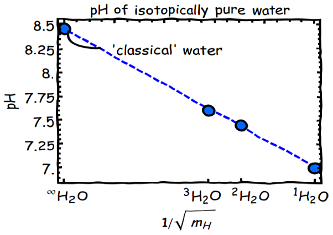Colored-noise thermostats to assess nuclear quantum effects in MD simulations for MOFs: a frequency analysis
Colored-noise thermostats to assess nuclear quantum effects in MD simulations for MOFs: a frequency analysis
Promotor(en): T. Verstraelen, V. Van Speybroeck /15_MODEV12 / Model and software developmentNanoporous materials are a very attractive class of materials in modern science and industry. They are crystalline materials with nanosized pores that can accommodate for guest molecules. Very popular examples of such materials are metal-organic frameworks (MOFs). MOFs are a hybrid class of materials in which inorganic metal oxides are interconnected by means of organic linkers. Except for this well-known type of material, new types of nanoporous materials are being developed every day, such as ZIFs, PoSiSils, … . Such materials can be used for a variety of applications such as catalysis, gas storage, gas separation, gas detection, … . Traditionally, MOFs are typically used as a powder. However, more and more scientists are interested in using these materials as a coating. Such coatings allow to add the typical functionalities of the nanoporous materials (adsorption, catalysis) to already existing devices, or they serve as a chemical protection for the underlying layers.
Macroscopic properties of such nanoporous materials can be predicted with simulations of nanoscale models. This facilitates the systematic assessment of a large number of different (even hypothetical) materials for industrial applications: a first screening of the MOF database in search of the optimal material is performed in silico, prior to expensive wet-lab experiments. The two most common techniques are Molecular Dynamics (MD) and Monte Carlo (MC) simulations. For both methods, one relies on the Born-Oppenheimer (BO) approximation, which decouples the motion of the electrons and that of the nuclei. Furthermore, the atomic nuclei are usually treated as classical point particles on a potential energy surface (PES) governed by the surrounding electrons. In principle, the electronic structure must be solved with quantum mechanical methods (ab initio) to derive the potential energy felt by the nuclei. However, for simulations on nanoporous materials, this becomes computationally infeasible and one has to use so-called force fields to compute the PES without explicitly describing the electronic structure. Indeed, such calculations require molecular configurations with 100 atoms and more to be simulated on a time scale of several nanoseconds. However, neglecting the quantum nature of the nuclei is especially detrimental for light nuclei such as hydrogen, and results in wrong predictions for quantities depending critically on these atoms. For instance, in the figure below, it is shown how the pH of pure water depends on the mass of the hydrogen atoms. For the classical treatment, the pH is largely overestimated, amounting to 8.5 instead of 7.0.

Goal One computationally feasible method to incorporate nuclear quantum effects is to use a colored-noise thermostat, as was first observed by Ceriotti and coworkers of the EPFL in Lausanne, with whom the CMM collaborates [1]. They proposed a modification of the MD technique to include colored noise, which can be tuned to include nuclear quantum effects over a frequency range of interest. In literature, this colored-noise thermostat has been tested on several basic systems such as water, where one can retrieve the fully quantummechanical results by choosing the thermostat parameters very carefully. This assessment is yet to be undertaken for metal-organic frameworks, for which we have observed that the nuclear quantum effects play a dominant role in for instance calculating the heat capacity. In this thesis, the student will have to study the relevant literature on colored-noise thermostatting and apply these principles to arrive at a characterization of MOFs. This will require to understand the process of tuning the thermostat parameters. Moreover, the student may choose to theoretically predict and afterwards verify the effect of these and other thermostats on the frequency spectrum of different materials, in order to understand the physical information contained in such a frequency spectrum. As such, this thesis work bridges the gap between the physical fundaments (including quantum effects) and the model development to arrive at the engineering applications of these popular class of materials.
The Center for Molecular Modeling (CMM) has much experience in developing force fields for MOFs, especially for MIL-53, as well as in characterizing these materials using several ensembles, available in yaff, a user-friendly Python package [2]. The inclusion of nuclear quantum effects in classical simulations is highly relevant, not only in the CMM, but also in other groups, as supported by the many publications concerning this problem. This topic involves the development of new algorithms and theoretical models, and the implementation of these models in our in-house simulation software. If needed, programming skills will be transferred during the thesis.
- Study programmeMaster of Science in Engineering Physics [EMPHYS], Master of Science in Physics and Astronomy [CMFYST]ClustersFor Engineering Physics students, this thesis is closely related to the cluster(s) nano, modelingKeywordsNuclear quantum effects, Colored noise, Force fields, Molecular simulation, Implementation, AnalysisReferences
[1] M. Ceriotti, G. Bussi, and M. Parrinello, 'Nuclear Quantum Effects in Solids Using a Colored-Noise Thermostat', Phys. Rev. Lett. 103, 30603 (2009).
[2] T. Verstraelen, L. Vanduyfhuys, S. Vandenbrande, and. S.M.J. Rogge, 'Yaff, yet another force field',http://molmod.ugent.be/software
[2] T. Verstraelen, L. Vanduyfhuys, S. Vandenbrande, and. S.M.J. Rogge, 'Yaff, yet another force field', http://molmod.ugent.be/software

